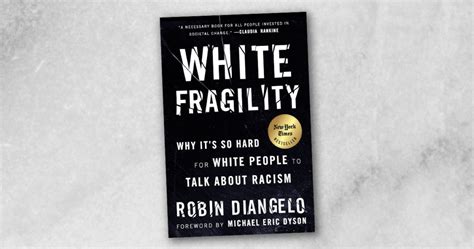
I picked this book up just as critical race theory and it’s cousins have come full swing into the American theater. Though I regularly read and listen to material (mostly essays) from both sides of the aisle, including some of the lauded authors in this book (Including Ibram Kehndi and Te-Nahisi Coats) I have yet to hear an explanation of the theory that holds any kind of logical water. I hoped a longer-form book like this might help me understand.
Normally at this point in the review, I would point out some things that I liked about the book; I gave it an honest try. I really couldn’t find anything lovely, praiseworthy, or of good report. In the words of Mary Shelley, it’s ‘sad trash’.
My issues with this book can be roughly summed up in three points arranged from least to most egregious.
- Liberal and sweeping use of semi-religious, autocratic assertions
- Spurious conclusions extruded from poor reasoning or blatant disregard for basic rules of statistics and logic
- Mushy approach to key definitions
For point one, take this example from the first chapter which attempts to explicate the book’s subtitle “why it’s so hard for white people to talk about race”
DiAngelo gives “anti-racist” training to corporations around the country. She notes, “when we try to talk openly and honestly about race, white fragility quickly emerges as we are so often led with silence, defensiveness, argumentation, certitude, and other forms of pushback. These are not natural responses, they are social forces that prevent us from obtaining the racial knowledge we need to engage more productively, and they function powerfully to hold the racial hierarchy in place. These forces include the ideologies of individualism and meritocracy…”
This is an interesting assertion, I regularly engage in discussions of race and racism, and rarely do I respond with “silence, defensiveness… or certitude” admittedly argumentation might be more common, but It’s not obvious that arguing against a bad point is racist. So if it’s not the discussion of ‘race’ per se in these haranguings that upset her audience, what could it be?
“Individualism and meritocracy” … As a possible explanation close at hand, she asserted that the roots of modern civilization are irredeemably racist with no supporting evidence or logic. She’s surprised that listeners at her seminars don’t respond warmly. I can find no definition of “natural” that would indicate a negative response to this kind of aggression is unnatural. This observation is not unlike a fool poking a snake with a stick and yelling “why are you angry!? why are you so fragile?” (note that I’m not saying a negative response is necessarily the best way forward, merely that it is certainly ‘natural’ and completely predictable).
Point two deals with spurious conclusions based on faulty logic. Take this quote that she uses as the bedrock of evidence of discrimination. “Kendi goes on to argue ‘if we truly believe all people are equal, then inequity can only be the result of systematic discrimination.'” Let’s set aside the odd premise of “truly believing all people are equal”. Indeed, believing that all people are equal and then finding that they aren’t would be surprising; however, no serious person has ever asserted that all people are equal.
Let’s assume Kendi is not a total bafoon, and he meant instead to paraphrase The Declaration of Independence which states “all men are created equal”. His logic then, is if everybody has an equal shot at obtaining a thing but some people get it and others don’t this must be due to racism. Even a casual student of statistics will wonder “isn’t this confusing correlation and causation?” It is. Assuming the difference between income between blacks and whites is due to discrimination is just as dull-minded and unscientific as assuming the same for the racial make-up of the NBA, or the higher earnings and education of Asian, and Nigerian American’s. There could be a hundred things that cause a disparity in outcome (equity) that have nothing to do with discrimination, systemic or otherwise.
This is such a common trope that a reader could almost overlook it, but it’s only one example of many. The treatment of so-called ‘reverse’ racism is just as appalling. (Reverse is her word, not might, as far as I can tell, racism doesn’t have an inherent ‘direction’).
“As with prejudice and discrimination, we can remove the qualifier “reverse” from any discussion of racism. By definition, racism is a deeply embedded historical institution of power, it is not fluid and does not change direction simply because a few individuals of color manage to excel… A person of color may refuse to wait on me if I enter a shop, but people of color cannot pass legislation that prohibits me and everyone like me from buying a home in a certain neighborhood.”
Interesting. Does Diangelo not know that legislation on the basis of race has been illegal since 1964? In fact, if anyone can point to legislation based on race I will stand beside you and fight it tooth and nail. Well, maybe there are some laws that violate that Civil Rights Act and haven’t been addressed yet? Yes… affirmative action, which is in some instances “legislation that prohibits me, and everyone like me” from studying at certain universities.
But she has an answer for that as well.
“White complaints about “reverse racism” by programs intended to ameliorate the most basic levels of discrimination are profoundly petty and delusional.” Translation? “Discrimination on the basis of race isn’t racist, you’re delusional” This is high-order gaslighting. And it’s also the essence of the book; it’s about morphing definitions.
She repeatedly tosses out miasmatic definitions of racism such as that quoted above “a deeply embedded historical institution of power”. In essence, she redefines racism (eschewing even the prefix “systemic”) as whatever it is that leads to racial disparity. With this context, her argument that disparity is due to racism is entirely consistent, and also entirely circular.